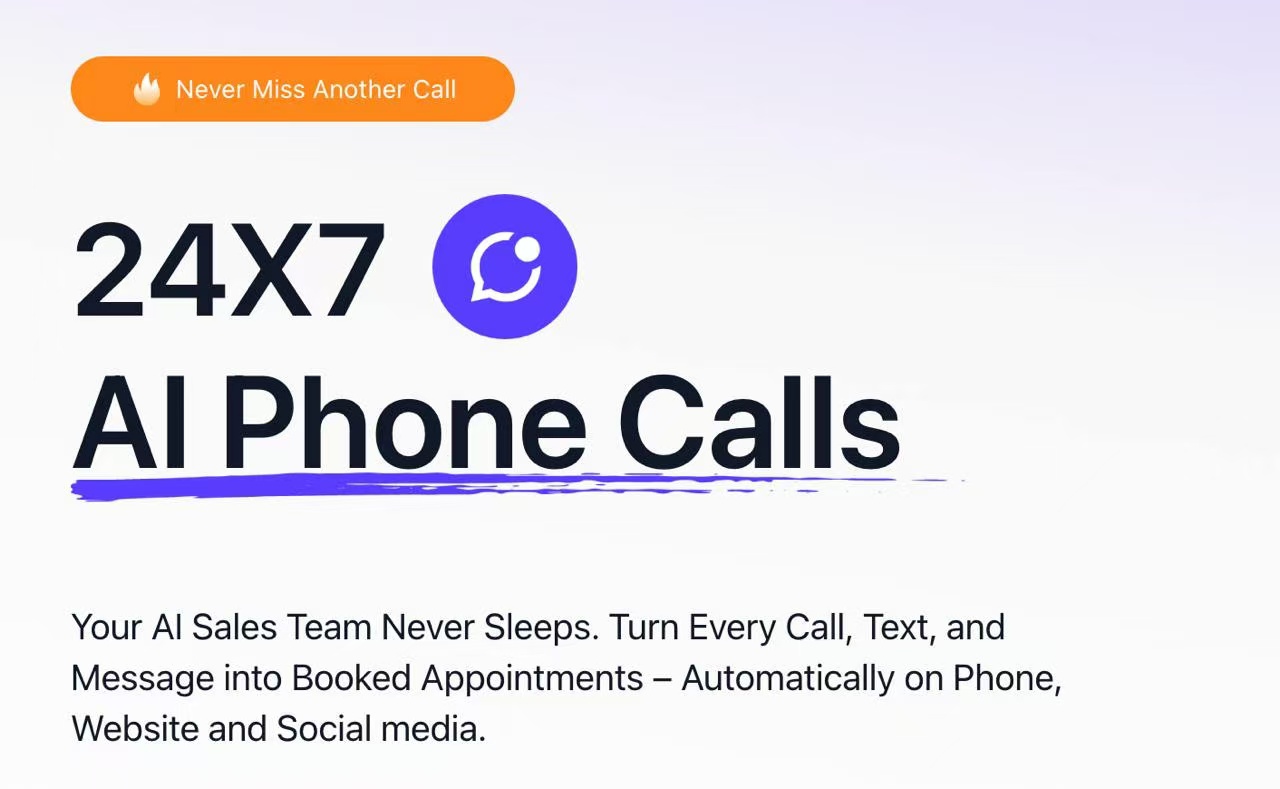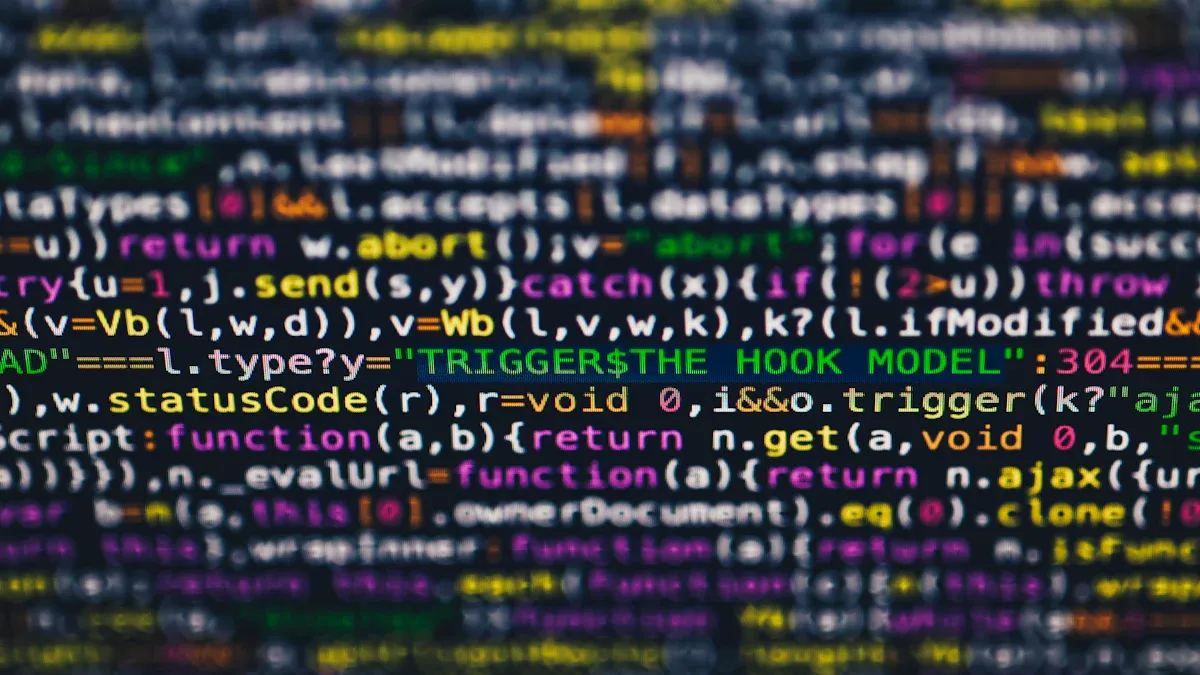How to Teach ChatGPT AI Agent Frameworks for Beginners

Learning how to teach ChatGPT involves guiding the AI to perform tasks effectively. By customizing its responses and actions, you can tailor it to meet your specific needs. For beginners, understanding how to teach ChatGPT provides insight into controlling AI outputs. AI agent frameworks play a crucial role in this process, serving as tools that enhance ChatGPT's capabilities and make it applicable across various industries.
Take, for example, the Newoaks AI Agent, a powerful framework that simplifies the process of teaching ChatGPT. Businesses leverage it to achieve impressive outcomes, such as improved customer service and increased efficiency. One major company utilized this tool to optimize ChatGPT and streamline operations. Similarly, online retailers have adopted it to craft better messaging, leading to higher sales. If you're curious about how to teach ChatGPT or explore AI agent frameworks, you can Start for Free and discover how these tools can customize ChatGPT to suit your needs.
Key Takeaways
Think of ChatGPT as a helpful AI tool for many tasks, like writing or coding.
Use AI tools like Newoaks to adjust ChatGPT's answers and make it better at certain jobs.
Begin with easy questions and slowly make them harder to train ChatGPT and make it more accurate.
Test and fix your ChatGPT setup often to make sure it works well and does what users need.
Write down your training steps to see progress and improve later.
Understanding ChatGPT and AI Agent Frameworks
What is ChatGPT?
ChatGPT is a smart AI language model made by OpenAI. It reads text you type and gives human-like replies. Think of it as a helper that answers your questions. ChatGPT learns through machine learning to give better answers. For example, if you ask it to explain something, it studies your input and responds using its training.
This tool can do many things. You can use it to write, code, or chat casually. Its flexibility makes it useful for both work and personal tasks.
What are AI Agent Frameworks?
AI agent frameworks are tools that improve and manage AI models like ChatGPT. They connect the AI to users and make it easier to use. These frameworks let you change how the AI behaves, link it to other systems, and automate tasks. For example, the Newoaks AI Agent is a well-known framework that helps teach ChatGPT easily.
With an AI agent framework, you can make the AI fit your needs better. It lets you decide how the AI should act in different situations.
Benefits of Using AI Agent Frameworks to Teach ChatGPT
Using AI agent frameworks has many benefits when teaching ChatGPT. First, they make customization simple. You can quickly adjust the AI's replies to meet your goals. Second, they save time. Frameworks like Newoaks AI Agent help add ChatGPT to your tasks smoothly. Third, they grow with your needs. These frameworks let you expand the AI's abilities as you need more features.
Tip: Begin with a basic framework to learn the process. Try advanced tools as you get more comfortable.
AI agent frameworks make ChatGPT stronger and easier to use. They help you get the most out of this AI tool.
Step-by-Step Guide to Train ChatGPT
Setting Up the Environment
Picking Tools like OpenAI API and Newoaks AI Agent
To train ChatGPT, you need helpful tools. OpenAI API lets you use ChatGPT and change its replies. Pair it with Newoaks AI Agent to make training easier. This framework helps control ChatGPT and add it to your tasks.
Choose tools that are simple and work well together. OpenAI API fits most systems, and Newoaks AI Agent adds features like automation. These tools make training faster and simpler.
Installing and Setting Up Software
After picking tools, install and set them up. Download OpenAI API and create an account. Follow the steps to connect the API to your system. Then, install Newoaks AI Agent using its setup guide.
Check your system’s requirements during setup. Update any needed software and test the tools with a basic query. A good setup makes training smooth and easy.
Customizing Prompts for ChatGPT
Writing Clear Prompts
Prompts are instructions for ChatGPT. Write them clearly to get good answers. Use simple words and be specific. For example, ask, “What are AI benefits in schools?” instead of “Explain this topic.”
Structure prompts well. Start with a clear question or command. Add extra details if needed. This helps ChatGPT understand and reply correctly.
Testing and Improving Prompts
Testing helps ChatGPT give better answers. Write a prompt and check the reply. If it’s unclear, change the wording and test again. Add details if the answer is too vague.
Use feedback to improve prompts. Look for patterns in ChatGPT’s replies and adjust prompts. Testing often helps ChatGPT learn to respond better.
Uploading and Preparing Training Data
Organizing Data for Training (e.g., CSV, JSON)
Organize data carefully for training ChatGPT. Use formats like CSV or JSON to keep it neat. Make sure the tone and style match. For example, use conversation pairs to teach ChatGPT dialogue skills.
Split data into training, validation, and test sets. This checks how well ChatGPT learns. Clean the data by removing extra content and adding labels. Good formatting helps ChatGPT learn faster.
Using APIs to Send Data
APIs make uploading training data simple. OpenAI API lets you send data straight to ChatGPT. Follow the API guide to learn how to upload.
Check your data for mistakes before uploading. Test small batches first to see if it works. Watch the upload process and confirm the data is correct. APIs help train ChatGPT with big datasets easily.
Integrating ChatGPT with AI Agent Frameworks
Connecting ChatGPT to the Newoaks AI Agent
To link ChatGPT with the Newoaks AI Agent, follow simple steps. First, make sure both tools are installed and set up. Open the Newoaks AI Agent and find the integration settings. Look for the option to connect your ChatGPT chatbot. Use the API key from OpenAI to create the connection. This key works like a bridge between ChatGPT and Newoaks AI Agent.
After connecting, you can adjust how ChatGPT interacts with users. For instance, you can set up workflows or automate tasks. Many companies have achieved great results using these tools. One global company improved customer service and made operations smoother. An online store boosted SMS messages, increasing clicks and sales.
Testing and Debugging the Integration
Testing is important after linking ChatGPT to Newoaks AI Agent. Start by asking simple questions through the ChatGPT chatbot. Check if the answers match what you expect. If something seems wrong, check the settings and API key again.
Debugging means finding and fixing problems in the connection. Use logs from Newoaks AI Agent to spot errors. For example, if the chatbot doesn’t reply, the logs can show why. Test different situations to see how the chatbot performs. Regular testing and debugging keep the system working well.
Tip: Write down any changes you make during testing. This helps you track fixes and solve problems faster.
Effective Strategies for Training AI Models
Interactive Learning with ChatGPT
Using Feedback Loops to Improve Responses
Feedback loops help ChatGPT give better answers. Start by giving clear instructions and checking its replies. If the answer is wrong, change your input and try again. This back-and-forth process helps ChatGPT improve over time. For example, if you want a chatbot for customer support, test it with real questions and correct mistakes to make it more accurate.
Use different types of data to teach ChatGPT about many topics. Check how well it works often and update the training data. This keeps the chatbot useful and reduces errors.
Role-Playing Scenarios for Contextual Training
Role-playing is a fun way to train ChatGPT for specific tasks. Pretend to have real conversations to teach it how to reply in different situations. For example, act like a customer asking questions, and let ChatGPT answer. This helps it learn to adapt and talk better.
You can add games, like giving points for good answers, to make training fun. Give quick feedback during practice and review progress regularly to improve learning.
Optimizing ChatGPT's Performance
Fine-Tuning for Specific Use Cases
Fine-tuning makes ChatGPT better for special tasks. Use specific data to teach it industry terms or workflows. For example, if you want an AI tutor, include school materials in the training. This makes the chatbot more accurate and helpful.
Monitoring and Adjusting Responses
Watch how ChatGPT performs to ensure it works well. Use tools to check its accuracy and consistency. Change its training data or prompts if needed. Regular checks keep its answers high-quality.
Best Practices for Beginners
Start with Simple Tasks and Scale Gradually
Begin with easy tasks when training ChatGPT. For example, teach it to answer simple questions before moving to harder tasks. This step-by-step method helps you learn and improve steadily.
Documenting the Training Process
Write down your training steps, like prompts and changes made. This record helps you see progress and fix problems. It’s also useful for future projects.
Tip: Clear instructions and regular feedback are important for good training.
Tools and Resources for Teaching ChatGPT

OpenAI API
The OpenAI API is a strong tool to work with ChatGPT. It helps you change how ChatGPT behaves and fits into apps. This makes it useful for many industries. With OpenAI API, you can train ChatGPT for tasks like answering questions or writing ads.
This tool boosts work speed and quality. For example, support agents using ChatGPT handle 13.8% more questions hourly. Businesses also cut reply times by 60%, making customers happier. The OpenAI API can handle big tasks, managing over 10,000 searches each second. It serves more than 180 million users globally.
Tip: Begin with easy projects when using OpenAI API. Add more features as you learn.
Chatbase
Chatbase is a helpful platform for improving ChatGPT. It checks how well your chatbot works and gives tips to make it better. Chatbase shows how users interact with your chatbot and spots weak areas.
It offers tools like chat reviews and user feedback tracking. These tools help you adjust your chatbot to meet user needs. Chatbase is great for businesses wanting better customer chats and smoother communication.
Note: Check Chatbase reports often to keep chatbot quality high.
Newoaks AI Agent
The Newoaks AI Agent is a complete tool for customizing ChatGPT. It has ready-made templates and simple designs, so even beginners can use it. It connects easily with APIs and data, helping you build custom chatbots.
Many companies use Newoaks AI Agent successfully. For example, a global company improved customer chats and work processes with it. They adjusted ChatGPT’s style and tone for better results. Online stores also use it to automate tasks, boosting sales.
Tip: Use Newoaks AI Agent templates to set up chatbots quickly and save time.
Other Helpful Tools and Libraries
When using ChatGPT, try different tools to make chatbots better. These tools are easy to use and help create smarter chatbots.
Dialogflow
Dialogflow helps build chatbots for websites and apps. It has simple tools to design conversations. You can make chatbots talk naturally and in many languages. This is great for projects used worldwide.Rasa
Rasa is a free tool for making smart chatbots. It lets you change how your chatbot works. Rasa helps chatbots understand tricky questions and answer well. You can train it for special tasks using machine learning.Botpress
Botpress is another free tool for chatbot creation. It’s simple and grows with your needs. Use its drag-and-drop tools to plan responses. Botpress works well with other tools, making it good for beginners.Microsoft Bot Framework
Microsoft Bot Framework helps make chatbots for many platforms. It works with Azure to add cool features like voice recognition. This tool is great for big businesses needing advanced chatbots.TensorFlow
TensorFlow is a strong tool for machine learning. It needs coding skills but lets you train chatbots with your own data. It’s perfect for developers trying advanced AI ideas.
Tip: If you’re new, start with Dialogflow or Botpress. They are easy to use and need little coding.
By trying these tools, you can improve your chatbot and make it fit your needs.
Common Challenges and Solutions
Keeping Data Private
Protecting Data Safely
It’s important to handle data safely when using AI like ChatGPT. Follow strict rules to keep private information secure. For example, laws like GDPR and CCPA control how data is collected and used. These rules help protect personal details and keep them safe.
Evidence Type | Description |
|---|---|
Open Science Challenges | Sharing research data can reveal private or sensitive details. |
Regulatory Framework | Laws like HIPAA set rules for keeping data safe. |
Good data handling builds trust and follows the law. Always check your methods to match global privacy rules.
Using Data Without Personal Details
Removing personal details from data helps keep it private. This way, you can still train ChatGPT without risking privacy. For example, anonymized data lets ChatGPT learn while keeping user information safe.
Fixing Connection Problems
Solving API and Framework Issues
Problems can happen when linking ChatGPT to tools like Newoaks AI Agent. First, check your API keys and make sure tools work together. Logs can show errors like wrong settings or failed requests.
Many people lack skills to use AI tools well.
Training programs and learning more about AI can fix this.
Fixing these problems makes connections smoother and improves chatbot performance.
Making Setup Easier
Simple setups save time and prevent mistakes. Use beginner-friendly tools like Botpress or Dialogflow. These tools have easy drag-and-drop features to design chatbot workflows. Clear instructions also make setup simple.
Making Chatbot Answers Better
Finding and Fixing Mistakes
Mistakes in ChatGPT’s answers can upset users. Check its replies often to find errors. For example, if answers don’t make sense, change the training data or prompts. Studies show most AI models risk overfitting, so careful checks are needed.
Using Feedback to Improve
Feedback helps ChatGPT get better. Watch things like how fast it replies, how accurate it is, and what users think.
Accuracy Rate: Shows how often answers are correct.
Response Time: Tracks how quickly it replies.
User Satisfaction: Collects user opinions about the chatbot.
Using feedback helps improve ChatGPT’s answers over time.
Teaching ChatGPT means learning steps like prompt writing and testing. These steps help it work better and give correct answers. Begin with easy tasks and slowly move to harder ones as you learn more.
Tip: Check progress using measures like accuracy, usefulness, and user feedback.
Key Idea | Explanation |
|---|---|
Ways to Customize | Methods like prompt writing and fine-tuning improve how it works. |
Business Benefits | Adding ChatGPT boosts work speed and helps connect with customers. |
Try tools like the Newoaks AI Agent to make training easier. Its simple design is great for people just starting out.
FAQ
How long does it take to train ChatGPT for a task?
The time depends on how hard the task is. Simple tasks might take a few hours. Bigger tasks with more data can take days.
Do you need coding skills to teach ChatGPT?
Knowing some coding helps but isn’t always needed. Tools like Newoaks AI Agent are easy to use. Learning about APIs and data formats can improve results.
Tip: Use beginner-friendly tools if you don’t know coding yet.
Can ChatGPT work without an AI agent framework?
Yes, you can use ChatGPT with the OpenAI API alone. But frameworks like Newoaks AI Agent make it easier to customize. They also add features like automation and workflows.
What if ChatGPT gives wrong answers?
Check your prompts or training data for mistakes. Rewrite prompts to make them clearer. If problems continue, fine-tune ChatGPT with better data or use feedback to improve it.
Is it safe to use personal data for training ChatGPT?
Avoid using personal data unless it’s anonymized. Follow privacy laws like GDPR or CCPA to stay safe. Always handle data carefully to protect sensitive details.
Note: Anonymized data is safer and still works for training.

